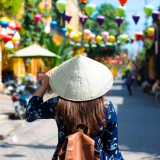Japanese Covered Bridge - Hoi An's Enigmatic Charm
This stunning Japanese Covered Bridge is adorned with intricate artistry and offers panoramic views, the bridge is a must-visit destination for those seeking an immersive experience in the charm of Hoi An.
If the allure of the Japanese Covered Bridge has ignited your curiosity, there's a trove of fascinating details awaiting your discovery.
Overview About Japanese Covered Bridge
- Address: 186 Tran Phu Street, Minh An Ward, Hoi An City, Quang Nam Province.
- Opening hours: daily from 09:00 to 11:00 and from 15:00 to 22:00.
- Price tickets: US $3.3/Vietnamese guest and US $6.2/Foreign guest. (This ticket price is the cost of visiting 21 places in the old town, including the Japanese Covered Bridge)
Built in the 18th century, the bridge stands as an architectural masterpiece, harmonizing Japanese design with local craftsmanship. Its timeless beauty reflects the elegance of a bygone era.
Hoi An Bridge Pagoda has many architectural features characteristic of Japanese culture such as the statues of beasts, which are mascots in worship.
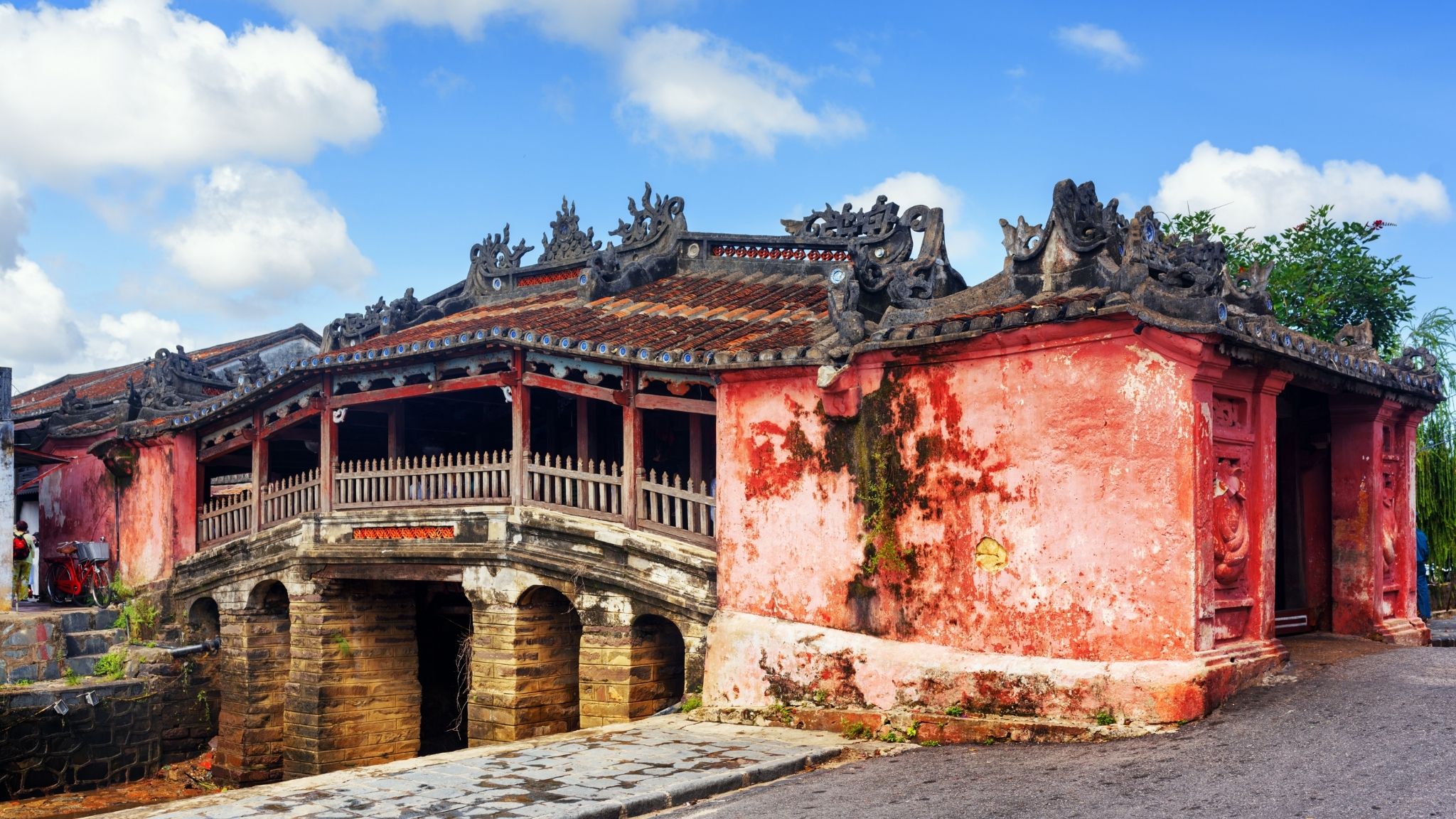
Japanese Covered Bridge
A special detail that many tourists might overlook is the image of the Japanese Covered Bridge printed on Vietnam's 20,000 dong polymer banknote.
What To See At Japanese Covered Bridge
The bridge is a harmonious blend of Japanese and Vietnamese architectural styles. The unique architecture of Hoi An Covered Bridge is a pagoda on top and a bridge on the bottom.
The bridge spans approximately 18 meters and with a roof to provide shelter from rain and sun, extending gracefully over a serene tributary of the Thu Bon River.
Inside View
As you step onto the bridge, take the time to closely examine the intricate architectural details. The tiled roof, wooden beams, and delicate carvings all contribute to its aesthetic appeal.
The pillars and columns inside the bridge are carved in extreme detail, clearly showing the aesthetics and worship beliefs of the people of the old town in the past. Notice the guardian statues at both ends and the meticulously crafted wooden elements.
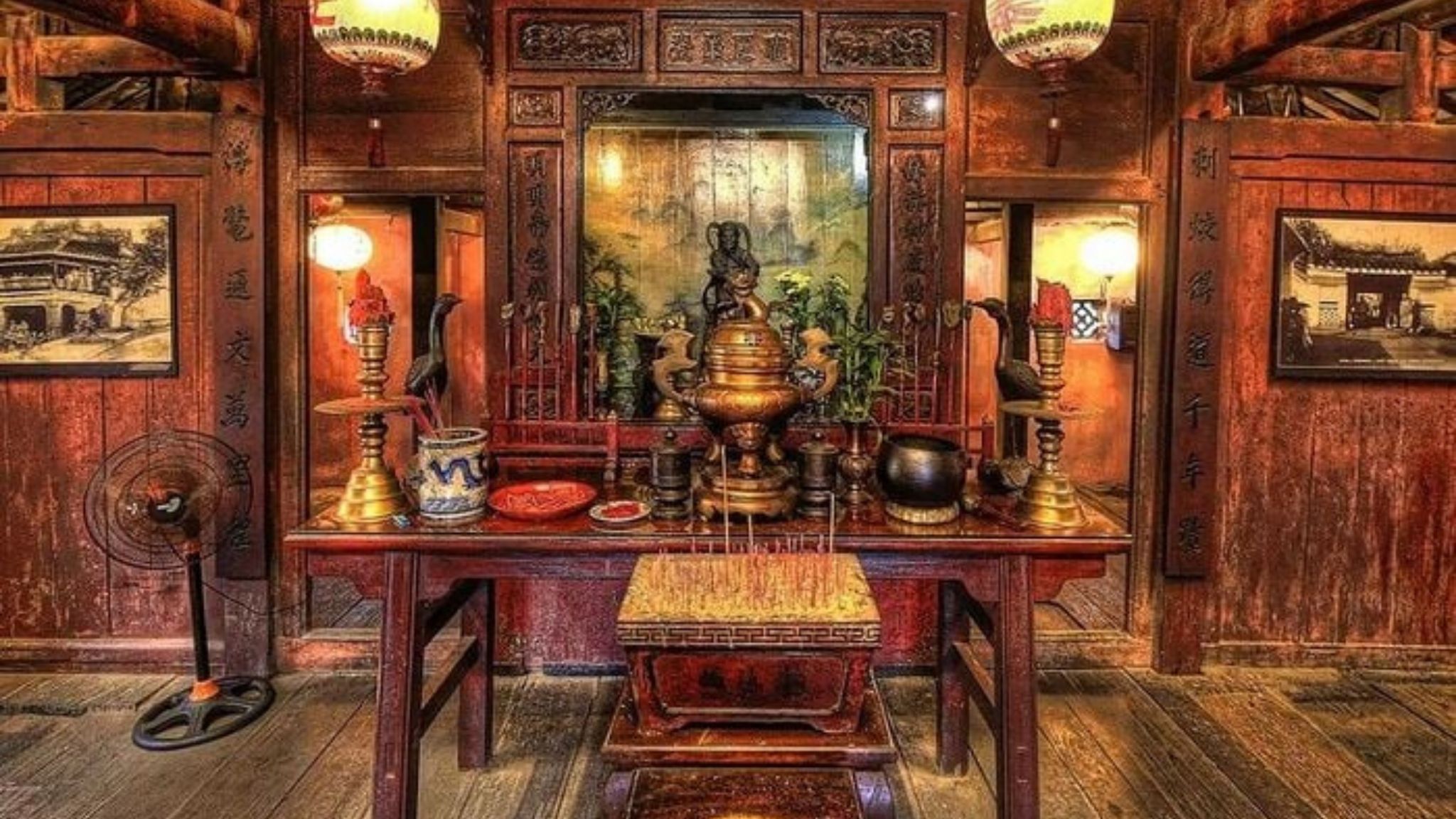
Explore The Unique Architecture Inside
Outside View
From the outside, the bridge stands out thanks to its soft curved roof supported by a wooden structure system, and the foundation is made of stone pillar arches. The pagoda and bridge are both made of lacquered wood, meticulously carved, with the pagoda's face facing the river bank, creating a breathtaking view from outside.
Exploring Hoi An would be incomplete without savoring the enchanting panorama of the Japanese Covered Bridge.
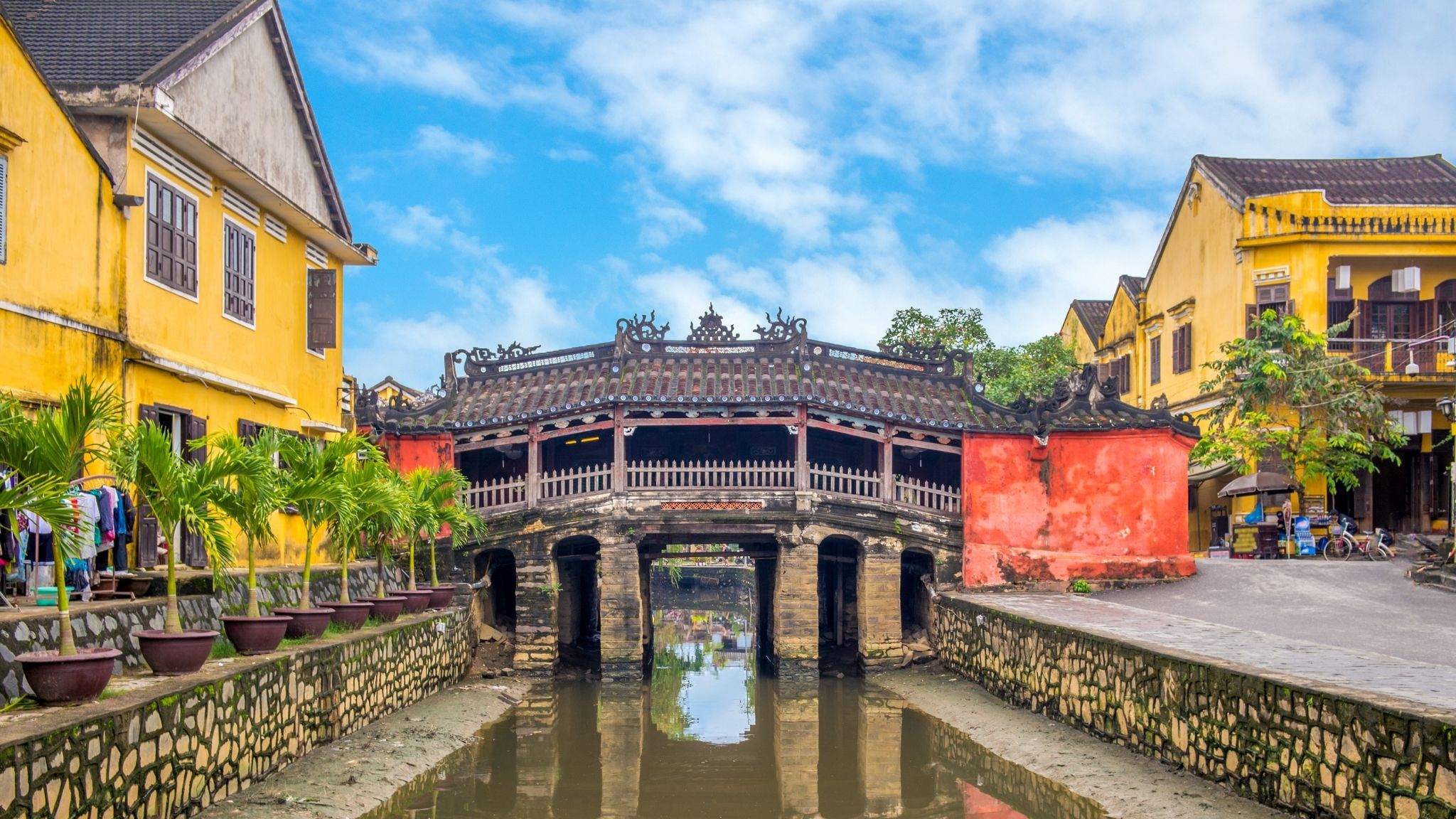
Admire The Incredibly Beautiful Panorama Of The Pagoda
How To Get There
Motorbike Rental
- Price: From US $4 to $10 per day.
The journey from Da Nang to Hoi An takes approximately 60 - 80 minutes, depending on traffic. Numerous rental shops are available in Da Nang. Simply present your identification, deposit, and payment to secure a motorbike.
Journeying by motorbike offers flexibility and cost-effectiveness, allowing travelers to explore freely. However, Traffic can be challenging, especially for those unfamiliar with Vietnamese road conditions.
By Taxi
- Price: From US $0.3 to $7 per kilometer.
Taxis are readily available hailed on the street. Using ride-hailing apps like Grab, Be, and Xanh SM are also convenient options.
Taxis in Vietnam provide 24/7 flexibility and comfort, ideal for late-night or early-morning travel in the often-hot weather. However, potential drawbacks include the taxi cost, especially during peak hours. Moreover, choosing reputable taxi companies helps mitigate concerns about scams or overcharging.
By Bus
- Price: From US $0.3 to $1.2.
Bus journeys may take around 70 - 80 minutes, accounting for stops and traffic. You can take bus numbers 01 or 14 from Da Nang and run every 30 minutes from 05:30 to 17:00.
Bus fares are typically low, allowing you to save money for other aspects of your journey. Also, during the trip, you may have the chance to interact with fellow passengers, enhancing your cultural understanding. However, bus takes longer travel time, less flexibility, and potential language barriers for non-Vietnamese speakers.

Enjoy The Comfortable Ride
Visit Nearby Interesting Attractions
Following your Japanese Covered Bridge visit, you can further explore the enchanting attractions nearby in Hoi An, including
Hoi An Market
- Address: 19 Tran Phu Street, Minh An Ward.
- Opening hours: Daily from 06:00 to 22:00.
- Ticket price: Free.
Hoi An Market, nestled in the heart of the ancient town, is a captivating display of Vietnamese commerce. The market's architecture, characterized by bustling stalls and vibrant colors, creates a lively and dynamic atmosphere.
Visitors can explore a diverse array of goods, from fresh local produce to traditional crafts, creating a sensory experience that reflects the rich trade culture of Hoi An.
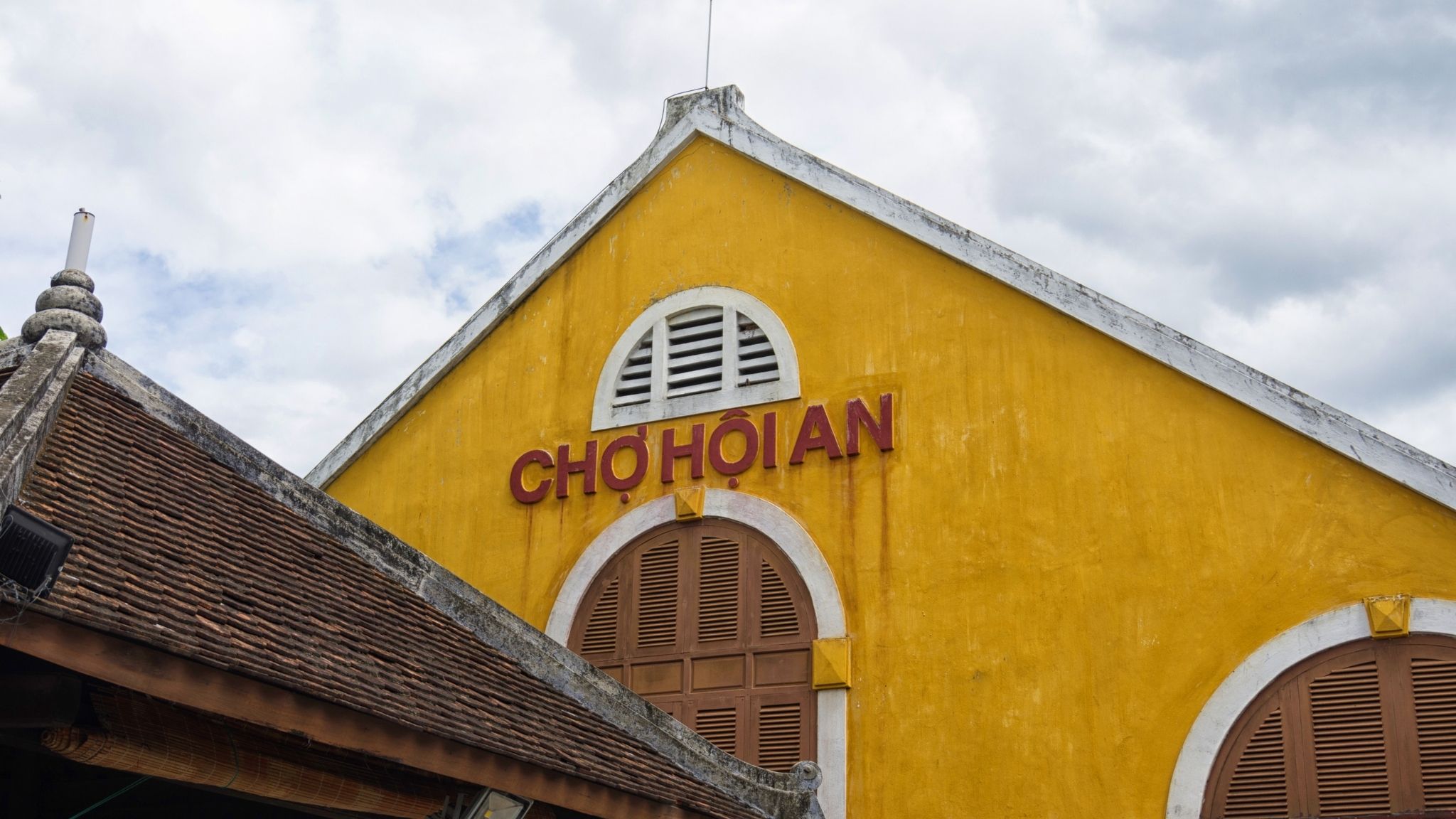
Experience Shop Like A Local In Hoi An Market
Sa Huynh Culture Museum
- Address: 149 Tran Phu Street, Minh An Ward.
- Opening hours: Daily from 07:00 to 21:00.
- Ticket price: Around US $5. (This ticket price is the cost of visiting 21 places in the old town, including Sa Huynh Culture Museum).
Stepping inside the museum, we will see neatly arranged glass cabinets displaying artifacts one by one.
In particular, in addition to the artifacts, which are accompanied by a clear documentation system and photos of their excavated origins, signposts will be hung on the walls, introducing details about each collection of antiques.
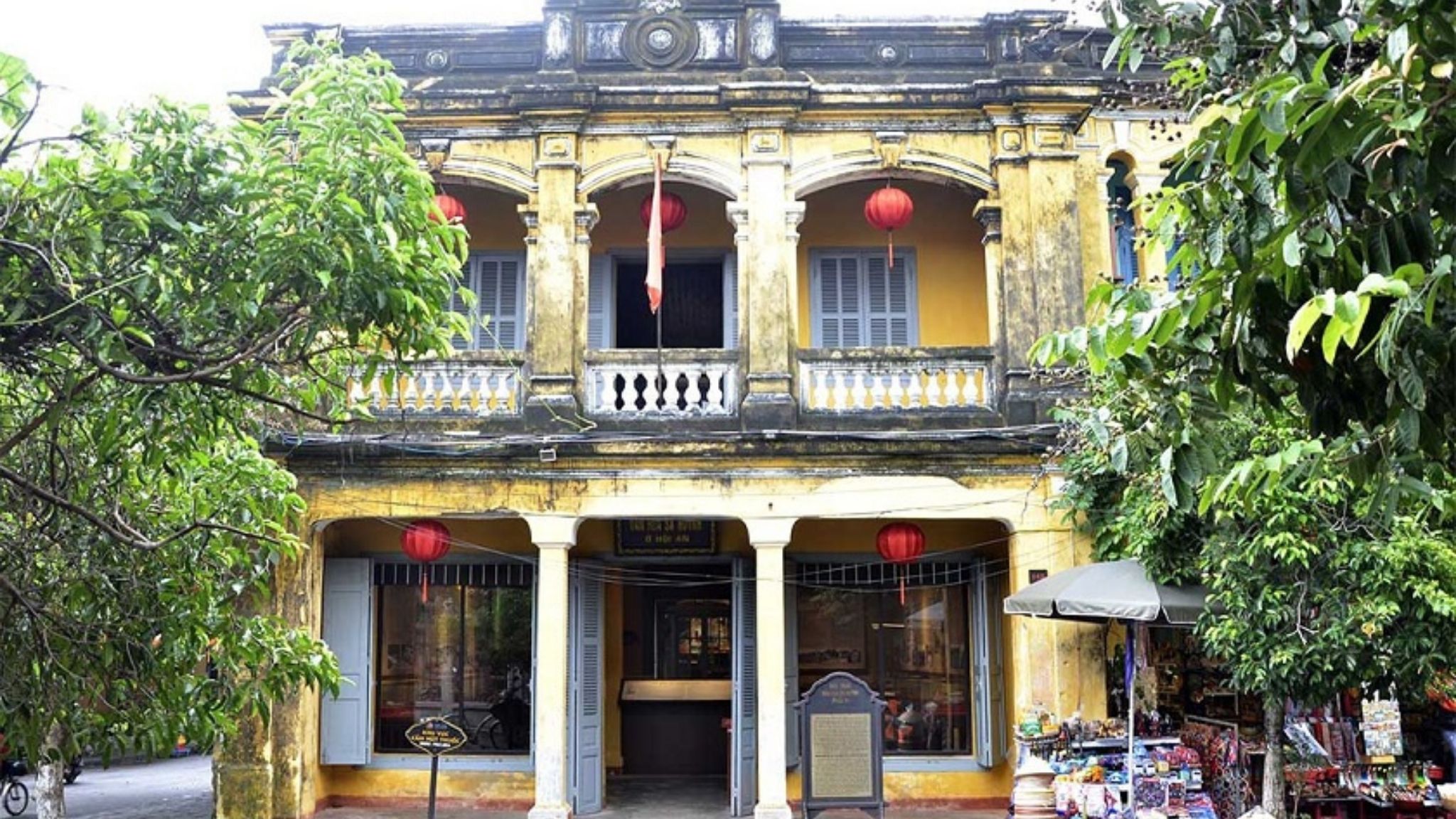
Explore The Ancient Collections In Sa Huynh Museum
Fujian Assembly Hall
- Address: 46 Tran Phu Street, Minh An Ward.
- Opening hours: Daily from 08:00 to 17:00.
- Ticket price: Around US $5. (This ticket price is the cost of visiting 21 places in the old town, including Fujian Assembly Hall).
Built in the 17th century by Fujian Chinese immigrants, the hall is a splendid example of traditional Chinese architecture.
Intricate carvings, vibrant mosaics, and a peaceful courtyard characterize the hall. Many people believe that the Assembly Hall is a sacred place, "praying for a wish", so Hoi An people and visitors from all over come here to pray for blessings.

Admire The Stunning Architecture Of Fujian Assembly Hall
Local Tips When Exploring Japanese Covered Bridge
- Security Awareness
Ensure the safety of your belongings, especially in crowded areas. Keep valuables within sight and always be alert to your surroundings to avoid falling victim to potential scams or theft.
- Respect Local Customs
When entering religious sites such as temples, dress modestly as a sign of respect for the local customs and religious practices associated with the location.
- Time Your Visit
Opt for an early morning visit to enhance your experience. The softer lighting provides better conditions for photography, and the atmosphere tends to be more tranquil because it is likely to be less crowded during these hours.
- Weather Preparedness
Be mindful of the unpredictable climate. Bring sunscreen and an umbrella, especially during hot and rainy seasons, to ensure you stay comfortable while exploring the area and are prepared for any weather conditions that may arise.
Trip that visit Japanese Covered Bridge
